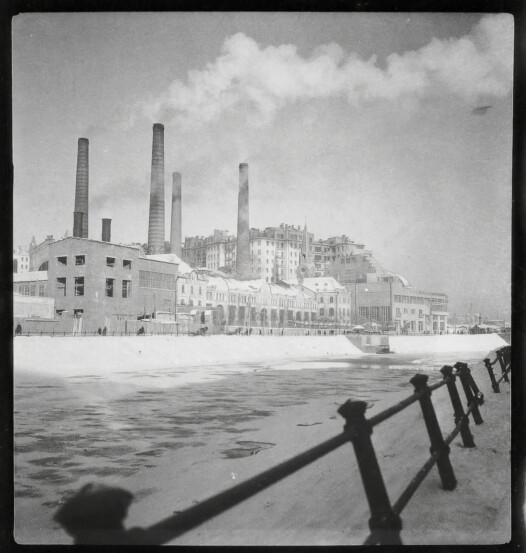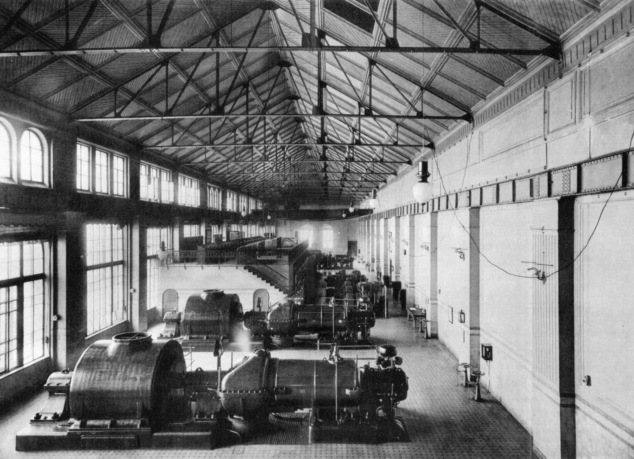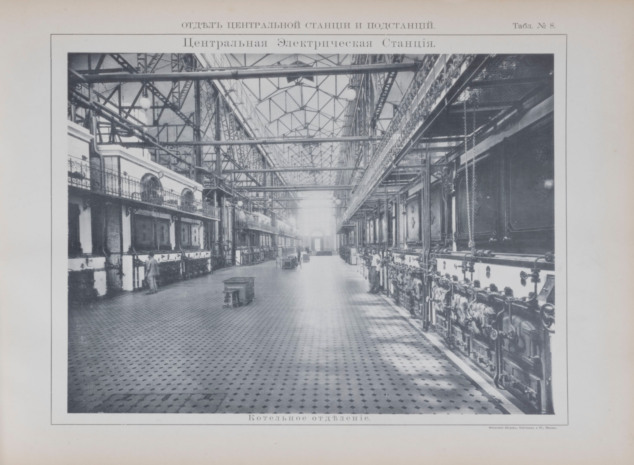At first,
Running the power station
- Age:
- Age restrictions
- 0+

Tramway power station in front of the Government House, 1931-1932
Photo by Robert Byron. Courtesy of the Museum of Mosenergo and Moscow Power Engineering

Engine room of the Tramway power station 1911.
City railways, 1903-1911
Publication of the Moscow city council. М., 1912
At first, oil brought in through pipes from the storage near the Simonov Monastery served as fuel for

Boiler room of the Central power station. Central power station. City railways,
1903-1911
Publication of the Moscow city council. М., 1912